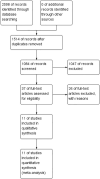Meta-analysis on aspirin combined with low-molecular-weight heparin for improving the live birth rate in patients with antiphospholipid syndrome and its correlation with d-dimer levels
- PMID: 34160390
- PMCID: PMC8238312
- DOI: 10.1097/MD.0000000000026264
Meta-analysis on aspirin combined with low-molecular-weight heparin for improving the live birth rate in patients with antiphospholipid syndrome and its correlation with d-dimer levels
Abstract
Background: Antiphospholipid antibody syndrome (APS) is a systemic, autoimmune, prothrombotic disease characterized by persistent antiphospholipid antibodies, thrombosis, recurrent abortion, complications during pregnancy, and occasionally thrombocytopenia. At present, there is no consensus on the treatment of this disease. Long-term anticoagulation is recommended in most cases in patients with thrombotic APS. This study aimed to evaluate whether aspirin combined with low-molecular-weight heparin (LMWH) can improve the live birth rate in antiphospholipid syndrome and its correlation with D-dimer.
Methods: The data were retrieved from the WanFang Data, CBM, VIP, CNKI, the Cochrane Library, PubMed, EMBASE, OVID, and Web of Science databases. We collected data on randomized controlled trials of aspirin combined with LMWH in the treatment of pregnant women with APS. The "Risk of Bias Assessment" tool and the "Jadad Scale" provided by the Cochrane Collaboration were used to evaluate the risk of bias and quality of the collected literature. The risk ratio (RR) and its 95% confidence interval (CI) were determined using Statase-64 software.
Results: In this study, a total of 11 studies were included, comprising a total of 2101 patients. The live birth rate in pregnant women with APS was higher on administration of aspirin combined with LMWH than with aspirin alone (RR = 1.29, 95% CI = 1.22-1.35, P < .001). d-dimer concentration in plasma predicted the live birth rate, which was higher below the baseline than above it (RR = 1.16, 95% CI = 1.09-1.23, P < .001). The subgroup analysis of the live birth rate was carried out based on the course of treatment, and the results were consistent with the overall results. Begg funnel plot test revealed no publication bias. Sensitivity analysis showed that deleting any study did not affect the results.
Conclusion: Aspirin combined with LMWH for APS may improve live birth rate, and detection of d-dimer levels in APS pregnant women may predict pregnancy complications and guide the use of anticoagulants.
Copyright © 2021 the Author(s). Published by Wolters Kluwer Health, Inc.
Conflict of interest statement
The authors report no conflicts of interest.
Figures







Similar articles
-
Aspirin or heparin or both for improving pregnancy outcomes in women with persistent antiphospholipid antibodies and recurrent pregnancy loss.Cochrane Database Syst Rev. 2020 May 2;5(5):CD012852. doi: 10.1002/14651858.CD012852.pub2. Cochrane Database Syst Rev. 2020. PMID: 32358837 Free PMC article.
-
D-Dimer Assay May Guide LMWH Treatment in Repeated Biochemical Pregnancy Losses in Women with Positive Antiphospholipid Antibody.Clin Lab. 2020 Mar 1;66(3). doi: 10.7754/Clin.Lab.2019.190637. Clin Lab. 2020. PMID: 32162875
-
Aspirin or heparin or both in the treatment of recurrent spontaneous abortion in women with antiphospholipid antibody syndrome: a meta-analysis of randomized controlled trials.J Matern Fetal Neonatal Med. 2019 Apr;32(8):1299-1311. doi: 10.1080/14767058.2017.1404979. Epub 2018 Jan 10. J Matern Fetal Neonatal Med. 2019. PMID: 29179589
-
Low molecular weight heparin and aspirin for recurrent pregnancy loss: results from the randomized, controlled HepASA Trial.J Rheumatol. 2009 Feb;36(2):279-87. doi: 10.3899/jrheum.080763). J Rheumatol. 2009. PMID: 19208560 Clinical Trial.
-
Prevention of recurrent miscarriage in women with antiphospholipid syndrome: A systematic review and network meta-analysis.Lupus. 2021 Jan;30(1):70-79. doi: 10.1177/0961203320967097. Epub 2020 Oct 20. Lupus. 2021. PMID: 33081590
Cited by
-
Management and outcomes of women with antiphospholipid syndrome during pregnancy.J Thromb Thrombolysis. 2023 May;55(4):751-759. doi: 10.1007/s11239-023-02789-8. Epub 2023 Mar 27. J Thromb Thrombolysis. 2023. PMID: 36967425
-
Maternal and perinatal outcomes of low-dose aspirin plus low-molecular-weight heparin therapy on antiphospholipid antibody-positive pregnant women with chronic hypertension.Front Pediatr. 2023 May 5;11:1148547. doi: 10.3389/fped.2023.1148547. eCollection 2023. Front Pediatr. 2023. PMID: 37215604 Free PMC article.
-
The Role of Acetylsalicylic Acid in the Prevention of Pre-Eclampsia, Fetal Growth Restriction, and Preterm Birth.Dtsch Arztebl Int. 2023 Sep 15;120(37):617-626. doi: 10.3238/arztebl.m2023.0133. Dtsch Arztebl Int. 2023. PMID: 37378599 Free PMC article. Review.
-
A Review of Immunological Evaluation of Patients with Recurrent Spontaneous Abortion (RSA).Int J Mol Sci. 2025 Jan 17;26(2):785. doi: 10.3390/ijms26020785. Int J Mol Sci. 2025. PMID: 39859499 Free PMC article. Review.
References
-
- Rodrigues VO, Soligo AGES, Pannain GD. Antiphospholipid antibody syndrome and infertility. Rev Bras Ginecol Obstet 2019;41:621–7. - PubMed
-
- Li XY, Zhao JX, Liu XY. Diagnosis and treatment of antiphospholipid antibody-related recurrent spontaneous abortion and analysis of therapeutic drugs and pregnancy outcome in 75 patients with antiphospholipid syndrome. Beijing Da Xue Bao Yi Xue Ban 2018;50:956–61. - PubMed
-
- Gadó K, Domján G. Antiphospholipid syndrome and pregnancy. Orv Hetil 2012;153:1207–18. - PubMed
-
- Rahman A. Management of antiphospholipid syndrome. Clin Rheumatol 2020;39:2111–4. - PubMed
-
- Arnaud L, Mathian A, Ruffatti A, et al. . Efficacy of aspirin for the primary prevention of thrombosis in patients with antiphospholipid antibodies: an international and collaborative meta-analysis. Autoimmun Rev 2014;13:281–91. - PubMed
Publication types
MeSH terms
Substances
LinkOut - more resources
Full Text Sources
Medical
Miscellaneous

